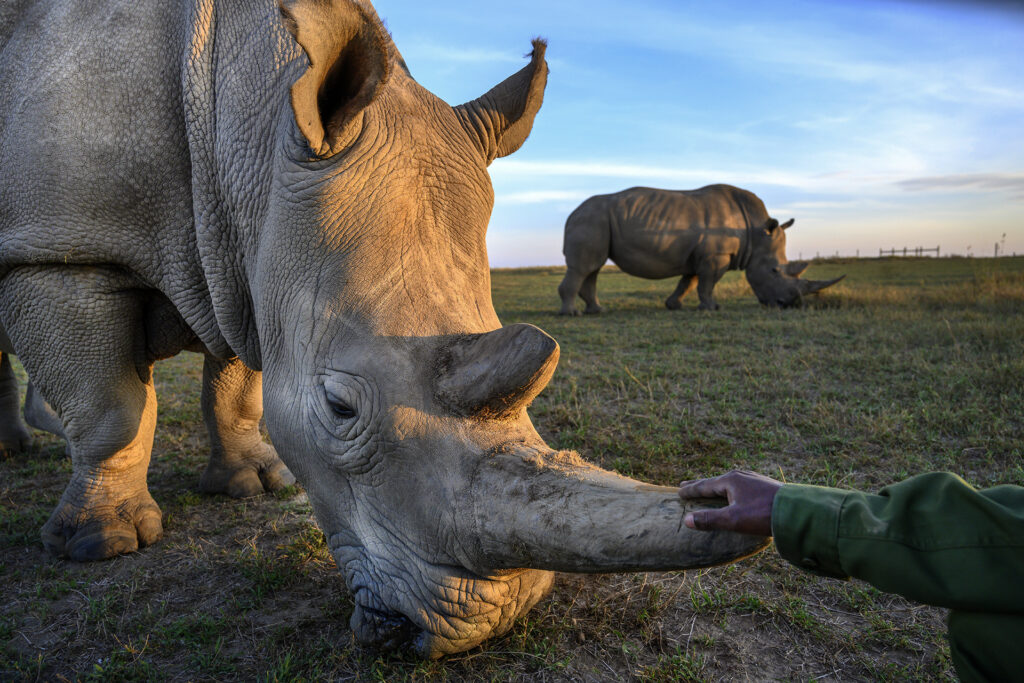A global consortium of scientists racing to save the northern white rhinoceros—two females shy of extinction—are now enlisting help from U.S. biotech company Colossal, known for attempting to resurrect extinct species such as the woolly mammoth, the dodo, and the Tasmanian tiger.
Thomas Hildebrandt, leader of the BioRescue consortium and an expert in wildlife reproduction based at Leibniz-Institute of Zoo and Wildlife Research in Berlin, says he was initially reluctant to work with Colossal.
“I don’t like this idea to recreate the mammoths and call it a conservation project,” he says. However, he’s come to realize that the tools developed by Colossal might be instrumental in the pursuit to rewild a healthy northern white rhino population.

In December 2019, scientists successfully extracted immature egg cells from northern white rhinos Najin and Fatu in Kenya’s Ol Pejeta Conservancy. This process led to 29 viable embryos, all of which are stored in liquid nitrogen at a laboratory in Italy.
“We want to save a keystone species, which played a very crucial role in a complex ecosystem in Central Africa,” Hildebrandt says. “We still have time to bring the rhinos back, and we strongly hope to achieve the first reintroduction of the northern white rhino in 10 to 20 years.”
Colossal founder and CEO Ben Lamm says the company’s involvement illustrates how its $225 million dollar investment in “de-extinction” can also boost conservation of living species before they vanish. (Read about the controversial quest to bring back the Tasmanian tiger.)
“The vast majority of conservation is focused on preserving land, stopping poaching.… but when you get down to the point that you’ve only got two females, you have to do more advanced technologies,” Lamm says.
He’s hopeful that their “whole de-extinction toolkit can be used by conservation groups and governments all around the world to save species.”
To Learn More Click Here.



